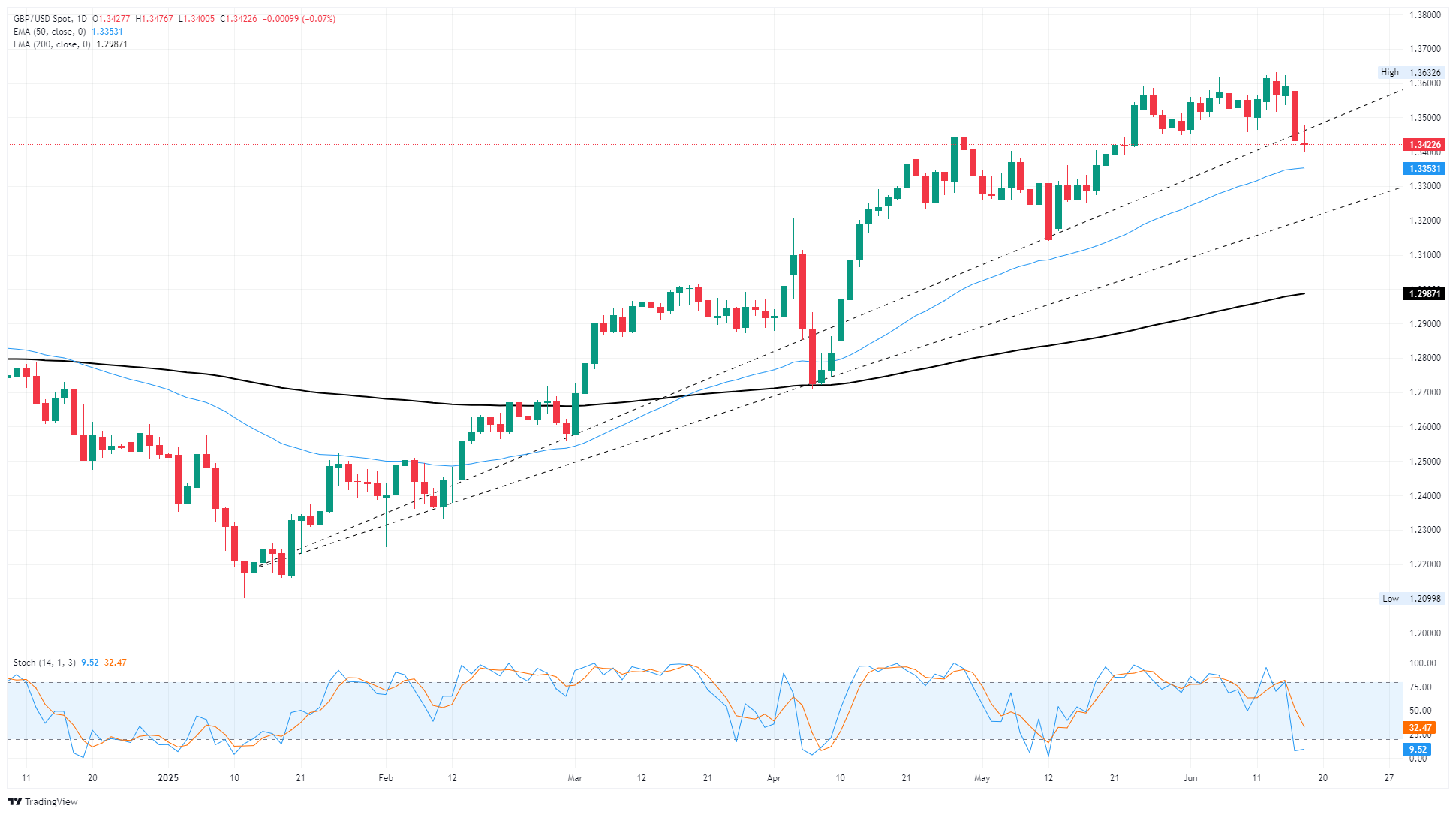GBP/USD holds steady post-FOMC, BoE on deck
- GBP/USD remains stuck near 1.3400 following an early-week decline.
- The Fed held interest rates steady, as markets broadly expected, with the requisite warnings about labor and inflation.
- The BoE is up next with its own interest rate decision; no change in UK rates is expected.
GBP/USD spun a circle on Wednesday, rising and falling through the Federal Reserve’s (Fed) latest rate hold. Cable is caught in intraday consolidation near the 1.3400 handle, as Pound Sterling traders gear up for the Bank of England’s (BoE) own interest rate decision, due early Thursday.
The Federal Reserve (Fed) hit the mark on Wednesday and kept interest rates on hold, as most investors expected. Traders are still pricing in around 50 basis points in interest rate cuts through the end of 2025, and the Federal Open Market Committee (FOMC) generally seems to agree with that assessment. However, Fed Chair Jerome Powell warned that ongoing policy uncertainty will keep the Fed in a rate-hold stance, and any rate cuts will be contingent on further improvement in labor and inflation data.
The Fed still sees an average of 50 basis points in interest rate cuts by the end of the year, following closely with what is priced in according to the CME's FedWatch Tool; however, ongoing trade policy uncertainty has pushed the spread of policymaker rate expectations wider, with some Fed personnel seeing higher year-end rates compared to the previous Summary of Economic Projections (SEP).
According to the CME's FedWatch Tool, rate traders slightly increased their already-standing bets of a first rate cut in September. Odds of a follow-up cut in October also increased, but odds of a delay in a second rate trim until December are still on the cards.
US President Donald Trump has gotten increasingly vocal about his wishlist to have the Fed start dropping interest rates, even as Fed policymakers hold in their “wait and see”, with officials bracing for economic fallout from Trump’s whipsaw tariff “strategy”. The BoE is likewise expected to hold rates steady at 4.25% on Thursday, but no meaningful shifts in policy stances, or complaints about them, are expected.
GBP/USD price forecast
Cable’s early-week decline puts GBP/USD on pace to take a fresh bear run at the 50-day Exponential Moving Average (EMA) near 1.3350, but only if bearish momentum continues. GBP/USD has tended to fade bearish snaps through 2025, with the pair still finding technical support from a rising trendline drawn from January’s lows near 1.2100.
GBP/USD daily chart

Pound Sterling FAQs
The Pound Sterling (GBP) is the oldest currency in the world (886 AD) and the official currency of the United Kingdom. It is the fourth most traded unit for foreign exchange (FX) in the world, accounting for 12% of all transactions, averaging $630 billion a day, according to 2022 data. Its key trading pairs are GBP/USD, also known as ‘Cable’, which accounts for 11% of FX, GBP/JPY, or the ‘Dragon’ as it is known by traders (3%), and EUR/GBP (2%). The Pound Sterling is issued by the Bank of England (BoE).
The single most important factor influencing the value of the Pound Sterling is monetary policy decided by the Bank of England. The BoE bases its decisions on whether it has achieved its primary goal of “price stability” – a steady inflation rate of around 2%. Its primary tool for achieving this is the adjustment of interest rates. When inflation is too high, the BoE will try to rein it in by raising interest rates, making it more expensive for people and businesses to access credit. This is generally positive for GBP, as higher interest rates make the UK a more attractive place for global investors to park their money. When inflation falls too low it is a sign economic growth is slowing. In this scenario, the BoE will consider lowering interest rates to cheapen credit so businesses will borrow more to invest in growth-generating projects.
Data releases gauge the health of the economy and can impact the value of the Pound Sterling. Indicators such as GDP, Manufacturing and Services PMIs, and employment can all influence the direction of the GBP. A strong economy is good for Sterling. Not only does it attract more foreign investment but it may encourage the BoE to put up interest rates, which will directly strengthen GBP. Otherwise, if economic data is weak, the Pound Sterling is likely to fall.
Another significant data release for the Pound Sterling is the Trade Balance. This indicator measures the difference between what a country earns from its exports and what it spends on imports over a given period. If a country produces highly sought-after exports, its currency will benefit purely from the extra demand created from foreign buyers seeking to purchase these goods. Therefore, a positive net Trade Balance strengthens a currency and vice versa for a negative balance.



